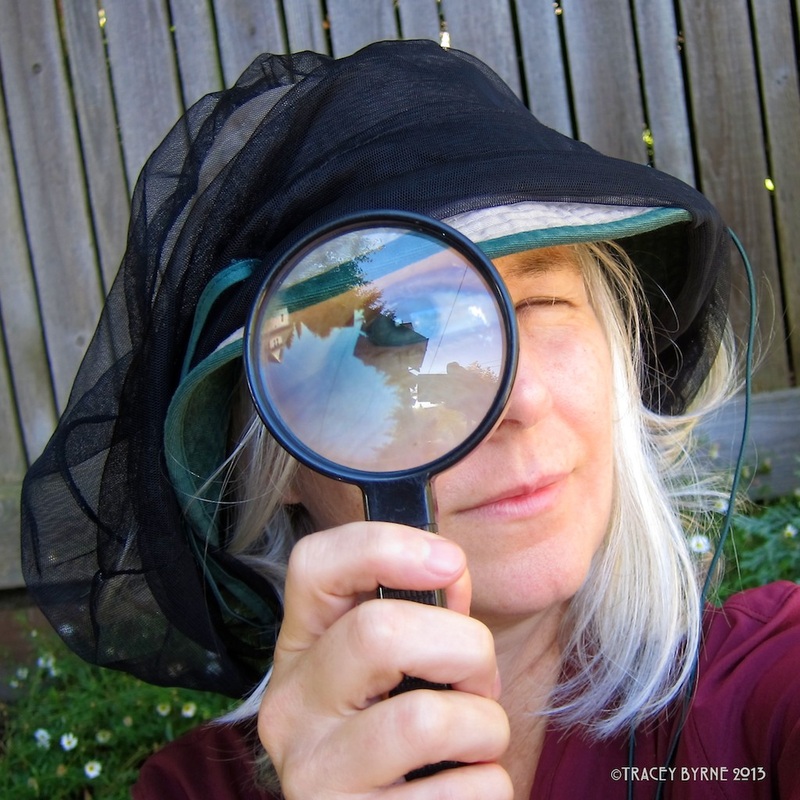It is sadly evident that many cat owners in my neighborhood do not understand the devastating effect of free-roaming domestic cats on our resident and migratory birds, especially during nesting season. We are plagued by free-roaming feral cats as well; unfortunately, there is a substantial feral cat colony living in the alley across the street (even after twenty years of TNR =trap, neuter, release). Most people would never even consider allowing packs of feral dogs to live in urban alleys, or give their dogs permission to run freely through other people's backyards killing wildlife. Why do people feel cats should have this privilege?
It is very discouraging in light of our efforts to create a Backyard Wildlife Sanctuary.
This message is to all cat owners out there, who do not feel that their cat is part of the problem: Please read the following report from American Bird Conservancy, and then join me in making our neighborhoods safe havens for urban wildlife.
Sobering Statistics from American Bird Conservancy
| Fledglings leave the nest after 14 days, but the parents continue to care for them for another month. 80% of the young die each year. We were sorry to find this newly fledged baby robin-dead in our Backyard Wildlife Sanctuary this morning | "Exact numbers are unknown, but scientists estimate that nationwide, cats kill between 500 million and one billion birds and billions more small mammals such as rabbits, squirrels, and chipmunks each year. Cats kill common species such as the Northern Cardinal, Blue Jay, and House Wren, as well as rare and endangered species such as the Piping Plover, Florida Scrub-Jay, and California Least Tern. Multiple studies have found that free-roaming cats reduce wildlife abundance and diversity, and cause extinctions and dramatic reductions of native wildlife populations. There are more than 80 million pet cats in the United States according to market research and a pet food trade association. A 1997 nationwide poll showed that only 35 percent are kept exclusively indoors, leaving the majority of owned cats free to kill birds and other wildlife at least some of the time. In addition, millions of stray and feral cats roam our cities, suburbs, farmlands and natural areas. Free-ranging cats are abundant and widespread predators. They often exist at much higher densities than native predators. They prey on large numbers of wild animals, some of which are rare or endangered. They compete with native predators, and they harbor a variety of diseases. Yet, cats are popular pets. In order to have and care for our pets--and still protect our native wildlife--we must make an effort to limit in a humane manner the adverse effects free-ranging cats can have on wildlife." |
"Well-fed cats continue to kill birds. The number of pet cats in the U.S. has increased threefold in
the last 40 years and approximately 65% of these are roaming for some portion of the day. These
free roaming cats, added to the number of feral cats, total an estimated 140 million cats, which
kill on average at least 1.4 million birds per day. In some areas, cat predation has decimated local
bird populations, and has led to the disappearance of some species."
From the New York Times
"In a 2013 report that scaled up local surveys and pilot studies to national dimensions, scientists from the Smithsonian Conservation Biology Institute and the Fish and Wildlife Service estimated that domestic cats in the United States — both the pet Fluffies that spend part of the day outdoors and the unnamed strays and ferals that never leave it — kill a median of 2.4 billion birds and 12.3 billion mammals a year, most of them native mammals like shrews, chipmunks and voles rather than introduced pests like the Norway rat.
The estimated kill rates are two to four times higher than mortality figures previously bandied about, and position the domestic cat as one of the single greatest human-linked threats to wildlife in the nation. More birds and mammals die at the mouths of cats, the report said, than from automobile strikes, pesticides and poisons, collisions with skyscrapers and windmills and other so-called anthropogenic causes."
What can you do to help make our neighborhoods safe havens for urban wildlife?
Ultimately, cats are not responsible for killing our native wildlife—people are. The only way to prevent domestic cat predation on wildlife is for owners to keep their cats indoors.
Please visit American Bird Conservancy for more information, statistics, links, and Fact Sheets=ABC




 RSS Feed
RSS Feed
